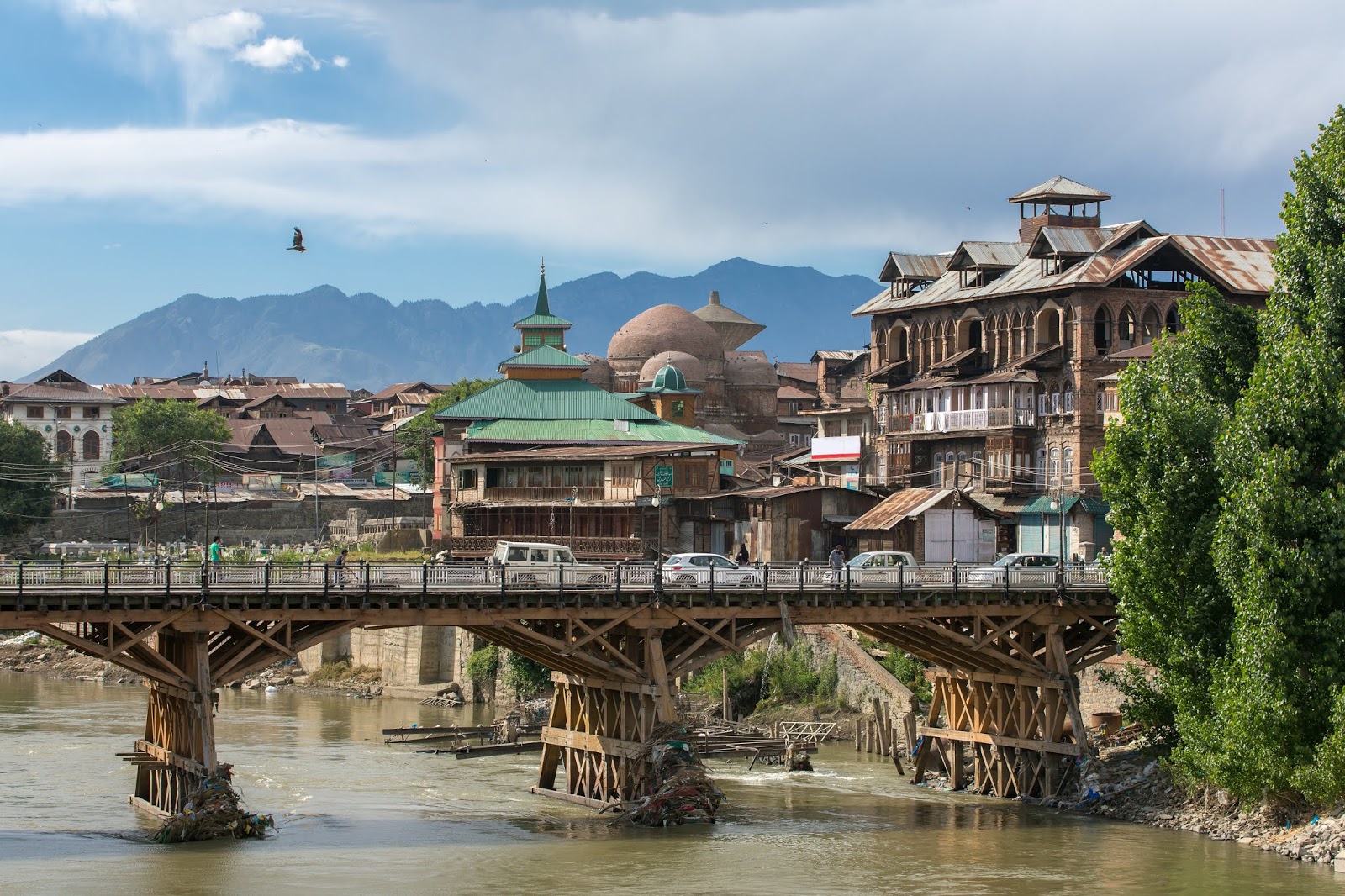Kashmir is the northernmost geographical region of the Indian subcontinent. Until the mid-19th century, the term "Kashmir"
denoted only the Kashmir Valley between the Great Himalayas and the Pir Panjal Range. Today, the term encompasses a larger
area that includes the Indian-administered territories of Jammu and Kashmir and Ladakh, the Pakistani-administered territories
of Pakistan Occupied Kashmir and Gilgit-Baltistan, and the Chinese-Occupied territories of Ladakh thatis also known as Aksai
Chin and the Trans-Karakoram Tract.
In the first half of the first millennium, the Kashmir region became an important centre of Hinduism and later of Buddhism;

later still, in the ninth century, Kashmir Shaivism arose. In 1339, Shah Mir became the first Muslim ruler of Kashmir,
inaugurating the Salatin-i-Kashmir or Shah Mir dynasty. The region was part of the Mughal Empire from 1586 to 1751,
and thereafter, until 1820, of the Afghan Durrani Empire. That year, the Sikh Empire, under Ranjit Singh, annexed Kashmir.
In 1846, after the Sikh defeat in the First Anglo-Sikh War, and upon the purchase of the region from the British under the
Treaty of Amritsar, the Raja of Jammu, Gulab Singh, became the new ruler of Kashmir. The rule of his descendants, under the
paramountcy (or tutelage) of the British Crown, lasted until the Partition of India in 1947, when the former princely state
of the British Indian Empire became a disputed territory, now administered by three countries: India, Pakistan, and China.
Hinduism and Buddhism in Kashmir
During the ancient and medieval periods, Kashmir was an important centre for the development of a Hindu-Buddhist syncretism,
in which Madhyamaka and Yogachara were blended with Shaivism and Advaita Vedanta. The Buddhist Mauryan emperor Ashoka is often
credited with having founded the old capital of Kashmir, Shrinagari, now ruins on the outskirts of modern Srinagar. Kashmir
was long a stronghold of Buddhism.As a Buddhist seat of learning, the Sarvastivada school strongly influenced Kashmir.

East and Central Asian Buddhist monks are recorded as having visited the kingdom. In the late 4th century CE, the famous
Kuchanese monk Kumārajīva, born to an Indian noble family, studied Dīrghāgama and Madhyāgama in Kashmir under Bandhudatta.
He later became a prolific translator who helped take Buddhism to China. His mother Jīva is thought to have retired to Kashmir.
Vimalākṣa, a Sarvāstivādan Buddhist monk, travelled from Kashmir to Kucha and there instructed Kumārajīva in the Vinayapiṭaka.
Karkoṭa Empire (625–885 CE) was a powerful Hindu empire, which originated in the region of Kashmir. It was founded by
Durlabhvardhana during the lifetime of Harsha. The dynasty marked the rise of Kashmir as a power in South Asia. Avanti
Varman ascended the throne of Kashmir on 855 CE, establishing the Utpala dynasty and ending the rule of Karkoṭa dynasty.

According to tradition, Adi Shankara visited the pre-existing Sarvajñapīṭha (Sharada Peeth) in Kashmir in the late 8th
century or early 9th century CE. The Madhaviya Shankaravijayam states this temple had four doors for scholars from the
four cardinal directions. The southern door of Sarvajna Pitha was opened by Adi Shankara.According to tradition,
Adi Shankara opened the southern door by defeating in debate all the scholars there in all the various scholastic disciplines
such as Mīmāṃsā, Vedanta and other branches of Hindu philosophy; he ascended the throne of Transcendent wisdom of that temple.
In the 10th century Mokshopaya or Moksopaya Shastra, a philosophical text on salvation for non-ascetics
, was written on the Pradyumna hill in Srinagar.[40][41] It has the form of a public sermon and claims human authorship and
contains about 30,000 shloka's (making it longer than the Ramayana). The main part of the text forms a dialogue between
Vashistha and Rama, interchanged with numerous short stories and anecdotes to illustrate the content. This text was
later (11th to the 14th century CE) expanded and vedanticised, which resulted in the Yoga Vasistha.
Queen Kota Rani was medieval Hindu ruler of Kashmir, ruling until 1339. She was a notable ruler who is often credited for
saving Srinagar city from frequent floods by getting a canal constructed, named after her "Kutte Kol". This canal receives
water from Jhelum River at the entry point of city and again merges with Jhelum river beyond the city limits.
Comments